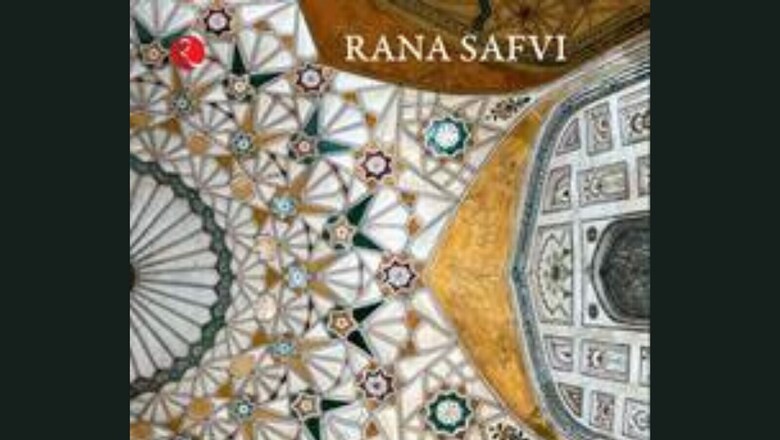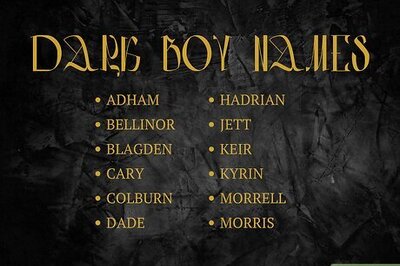
views
Having grown up in Uttar Pradesh (UP) and lived in Agra, the Taj Mahal was a familiar sight to me. I had visited it innumerable times but I had never spared a thought for Burhanpur where Mumtaz Mahal had died and had been initially buried. It was in search of her first burial place that I went to Burhanpur and as someone whose spirit is in tune with ruins, was rewarded with riches beyond compare.
The word burhan means demonstration or proof and true to its meaning, Burhanpur stands witness to the initial tears and sorrow of the grief-stricken husband and children of Mumtaz Mahal.
But let’s take a tour of the city first.
Once a thriving Mughal city known as the ‘Gateway to the Deccan’, it is now a sleepy town, which to me looks stuck in a time warp. Unlike most other walled cities, the city walls of Burhanpur, MP are still intact, as are the gateways. I drove through the Shanwara Gate, Itwara Gate and Shikarpura Gate. Other gateways are named Lohar Mandi Gate, Dilli Gate, Sindhipura Gate, Silampura Gate and Rajpura Gate.
Beautiful wooden houses coexist with cement ones, though lack of heritage management is proving tough on the former. Tongas still ply as a regular means of transport.
The earliest rulers of the area were the Rashtrakutas. In the fourteenth century, it was annexed by the Faruqi rulers who ruled here till the sixteenth century. In 1599, Akbar’s army occupied Burhanpur and it became the Mughal capital of Khandesh.
The city of Burhanpur was named after the famous Chisti saint Khwaja Burhanuddin Gharib (d. 1344 ce). Perhaps that is why there are many dargahs in the city. One of the most famous dargah is of Hazrat Nizamuddin Shah Bhikari. The dargah of Shah Bhikhari dates back to the reign of the Farooqi ruler Adil Khan II in the fifteenth century. Just like other dargahs, this is the resting place of many people. But the unique aspect of this dargah is that it sits on the riverbed of the Utawali River. More than a lakh devotees offer namaz on Barawafat—the Prophet’s birthday and also the day of Shah Bhikhari’s urs.
The other famous dargah is the luminous Dargah-e-Hakimi, an important pilgrimage for the Bohra community, the resting place of Syedna Abdul Tayeb Zakiuddin (d. 1787). He was the forty-first Da’i al-Mutlaq (head) of the Dawoodi Bohra sect of Muslims.
Another very important place of pilgrimage is the Gurudwara Badi Sangat. It marks the site where Guru Gobind Singh, travelling to the south with Emperor Bahadur Shah I, stayed in May-June 1708 and has a copy of Sri Guru Granth Sahib handwritten by the tenth Sikh Guru, Guru Gobind Singh Ji.
***
The Faruqi rulers have left many architectural gems in the city and the Jama Masjid is a glorious testimony to their legacy. This mosque is special for it is proof of our syncretic culture with its Sanskrit and Arabic inscription on the walls, detailing its building by the Farooqi rulers. The mosque has no roof and its soaring arches fuse together to form a ceiling.
The Farooqi rulers also built a Shahi Qila or royal fort on the banks of the Tapti River. The Mughals used this Qila as their residence once Khandesh became a part of the Mughal Empire. The importance of the subah or province of Khandesh can be seen from the fact that Mughal princes, including Akbar’s son Daniyal, Shah Jahan and Aurangzeb were its governors.
The shikaar-loving, pleasure-seeking Prince Daniyal built an Aahukhana, or deer park, opposite the Badshahi Qila in the village of Zainabad on the banks of the river Tapti. It was here that the young Aurangzeb met Zainabadi Bai and fell passionately in love with her. Unfortunately, their love story was doomed as Zainabadi Bai died soon after due to poisoning.
When Shah Jahan was the governor of the Deccan, he added various buildings within the Badshahi Qila, including a once-gorgeous and now deteriorating hammam, for his wife’s relaxation. The hammam is beautifully painted and one of the fading frescoes has a building which looks remarkably like the Taj Mahal. It was in this palace that Mumtaz Mahal died on the night of 16-17 June 1631, after giving birth to Gauhar Ara Begum.
***
Death plays a huge role in this city’s history, if the beautiful tombs dotting the city are anything to go by. I came here in search of Mumtaz Mahal’s original grave but was fascinated by the numerous other graves that dot the landscape.
The tomb of Shahnawaz Khan, son of Abdur Rahim Khan-e-Khana, is called ‘Kala Taj Mahal’ or ‘Black Taj Mahal’ by the locals. It’s a beautiful monument, shaped like the Taj though built on a much smaller scale. And though it owes its name to the local black stones used for its construction, it has also been blackened by age.
I visited another stunning mausoleum, the grave of Bilqis Begum—wife of Shah Shuja, son of Shah Jahan. Coincidently, she too died during childbirth, like Mumtaz Mahal.
It is very small but gorgeous, like the twelve-leaved, lotus-shaped platform it sits on. Its dome and walls are fluted which also gives it another name: Kharbooza Mahal or Kharbooze ka Gumbad.
In a village, some 10 kilometres away from Burhanpur, there is the chhatri of Raja Jai Singh, the great Rajput general who was the commander of the Mughal forces in the Deccan. He died at Burhanpur, reportedly while returning from the Deccan, and Aurangzeb built a chhatri in commemoration, keeping with the custom among the Rajputs.
It is a rarely visited monument and I am not surprised since the road leading to it, which goes through villages, is rough and not metalled. The chhatri itself is of black stone and looks quite grand, standing all alone amongst the plantain fields.
This excerpt from A Saint, a Folk Tale and Other Stories: Lesser-known Monuments of India by Rana Safvi has been published with the permission of Rupa Publications
Read all the Latest Opinions here

















Comments
0 comment